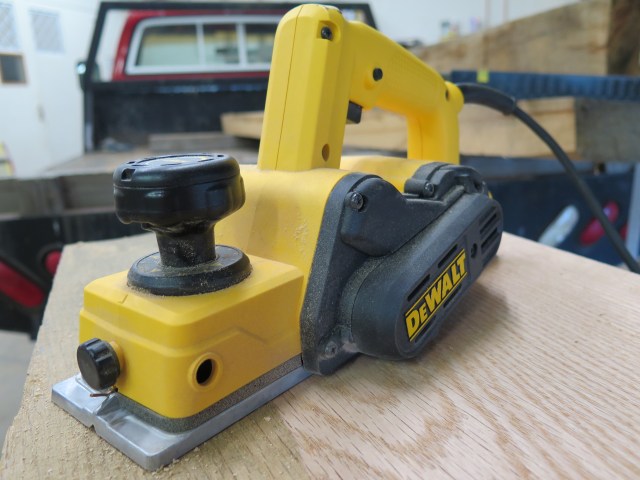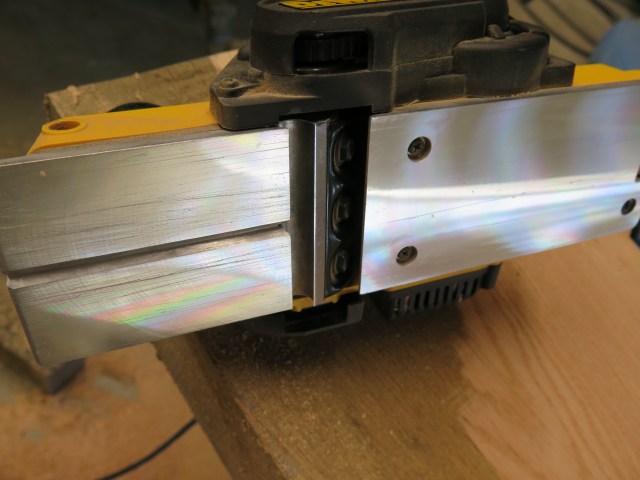Big slabs of wood move as they dry – sometimes a little, sometimes a lot. In my experience, the worst of the movement happens in the first six to 12 months of drying. The hardest two problems to deal with that emerge from the drying process are: a crown over the length of the slab, and the more common twist or wind over the length.
This movement (particularly a bad twist) can mean removing a tremendous amount of wood to get a flat surface. A jack plane with a cambered iron can do wonders, but if there is a lot of wood that has to come of it, can be quite a job. Another factor can be the wood itself. Most of the benchtops I deal with are red or white oak; once dry, it is hard to take much of a bite with a handplane.

The past couple of years I have been using a hand held electric plane for hogging off the majority of the offending wood. It works quite well across or with the grain. When using it cross-grain it will take close to 1/8″ off each pass. Once I am close to where I need to be, I can easily finish up with handplanes.

These little electric planes vary in price, I think I paid $120 for the one I have. This one has seen some pretty heavy use and has held up well so far.

In the video Chris and I shot, “Roubo Workbench: by Hand & Power,” we used one of these electric planes to flatten one face of the benchtop. We did the opposite face of the top with a 20″ surface planer. After all was said and done, wrestling the 300 lb. benchtop through the surface planer was much more exhausting than going the electric plane/handplane route.
— Will Myers